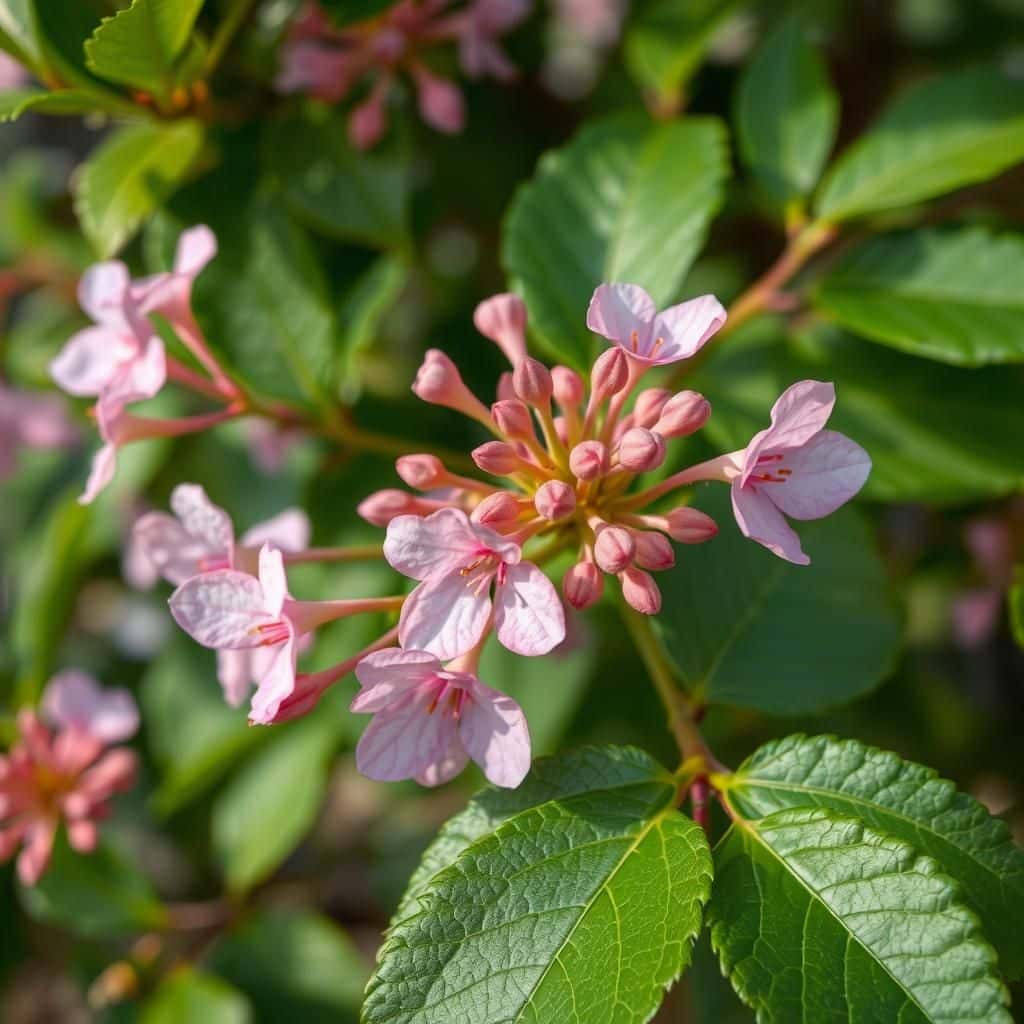Essential Guide to Crepe Myrtle Growing Conditions for Thriving Plants

Crepe myrtles are beloved for their stunning blooms and vibrant foliage, making them a popular choice for gardeners across various climates. However, achieving thriving plants requires understanding specific growing conditions that cater to their unique needs. This essential guide delves into the ideal environmental factors, soil types, sunlight requirements, and watering practices that foster robust crepe myrtles. Whether you are a seasoned gardener or a novice, this comprehensive overview will equip you with the knowledge necessary to cultivate these striking plants successfully. Discover the secrets to growing healthy crepe myrtles and enhance your garden's beauty with their enchanting presence.
Optimal Growing Conditions for Crepe Myrtle
Crepe myrtle, known for its stunning summer blooms and vibrant fall foliage, thrives best in conditions that mimic its native environment. These plants prefer full sun exposure, ideally receiving at least six hours of direct sunlight each day, as this promotes robust growth and abundant flowers. They are also adaptable to a range of soil types but flourish in well-draining, sandy loam soils that have a moderate level of fertility. Watering is essential, particularly during dry spells, but it’s crucial to avoid waterlogged conditions that could lead to root rot. Additionally, Crepe myrtle is highly tolerant of heat and drought, making it an excellent choice for warmer climates.
Soil Requirements
Crepe myrtle prefers well-drained soil, as water retention can negatively impact root health. The ideal soil composition is a sandy loam that allows for good drainage while retaining some moisture. Adding organic matter like compost can improve soil fertility and structure, providing the necessary nutrients for healthy growth. Avoid heavy clay soils that can suffocate roots and lead to increased pest and disease susceptibility.
Sunlight Needs
To ensure optimal growth and flowering, Crepe myrtle should be planted in an area that receives full sun, which is generally defined as six to eight hours of direct sunlight daily. Insufficient sunlight can result in leggy growth and fewer flowers, reducing the visual impact of the plant. Therefore, selecting a sunny location is crucial for enhancing the overall health and aesthetic appeal of Crepe myrtle.
Watering Guidelines
While Crepe myrtle is somewhat drought-tolerant, it requires regular watering, especially in the establishment phase and during prolonged dry spells. A deep watering once a week can be beneficial, allowing the soil to dry out slightly between watering sessions. Overwatering should be avoided, as excessively moist conditions can lead to root rot and fungal issues. Monitoring soil moisture will help maintain a balance between keeping the plant hydrated and preventing excess water retention.
See also:
Temperature Tolerance
Crepe myrtles flourish in warm climates and exhibit excellent tolerance to high temperatures, thriving in USDA hardiness zones 6 through 9. These plants can withstand winter temperatures down to about -10°F when established, though extreme cold may cause dieback. Understanding the local climate and selecting a zone-appropriate cultivar can help improve growth success and resilience against temperature extremes.
Pest and Disease Management
While Crepe myrtle is generally resilient, it can be affected by a few common pests and diseases, including aphids, powdery mildew, and sooty mold. Regular monitoring and providing adequate air circulation can help mitigate these issues. Insecticidal soap or neem oil can effectively manage pests without harming the plant. Maintaining proper watering and avoiding overcrowded planting can also reduce the risk of disease, ensuring a robust and healthy growth habit.
| Factor | Ideal Condition |
|---|---|
| Soil | Well-drained, sandy loam |
| Sunlight | 6-8 hours of direct sun |
| Watering | Weekly deep watering |
| Temperature | Zones 6-9, tolerant to -10°F |
| Pest Management | Regular monitoring and treatment |
Understanding Soil Requirements for Crepe Myrtles
Crepe myrtles thrive in well-draining, loamy soil that is rich in organic matter. Ideally, the soil pH should be between 6.0 and 7.0, which creates the best conditions for nutrient uptake. Heavy, clay soils can lead to root rot, while overly sandy soils may not retain sufficient moisture. Incorporating compost or well-rotted manure into the planting area can improve soil structure and fertility, providing a nutrient-rich environment that supports the healthy growth of crepe myrtles.
Optimal Sunlight Exposure
Crepe myrtles require full sunlight to flourish, ideally receiving at least 6 to 8 hours of direct sun each day. This sunlight is crucial for the production of stunning blooms and vibrant foliage. Partial shade may result in leggy growth and fewer flowers, impacting their overall performance. When choosing a planting location, select an area that is unobstructed by large trees or structures to ensure the plants receive optimal light throughout the day.
Watering Needs and Frequency
When establishing crepe myrtles, consistent watering is essential for promoting strong root development. They prefer to be watered thoroughly during dry spells, allowing the top layer of soil to dry out before the next watering session. However, be cautious of overwatering, as crepe myrtles are susceptible to root rot in overly saturated soils. Once established, these resilient plants typically require less frequent watering, relying on their ability to withstand drought-like conditions.
See also:
Temperature Tolerance and Hardiness Zones
Crepe myrtles are known for their heat and drought tolerance, thriving in U.S. Department of Agriculture (USDA) hardiness zones 6 through 9. They flourish in warm climates, withstanding temperatures soaring above 90°F during the summer months. However, they can also tolerate occasional frosts during the winter, though prolonged exposure to subzero temperatures can damage the plant. Understanding your local climate and selecting the right cultivars suited for your hardiness zone will significantly enhance their chances of survival and success.
Nutrient and Fertilization Requirements
To keep crepe myrtles healthy and blooming vigorously, they benefit from a balanced fertilization regimen. A slow-release fertilizer, high in phosphorus, should be applied in early spring before new growth begins. This encourages robust flowering, as well as leaf health. Excessive fertilization should be avoided, as it can lead to lush foliage at the expense of blooms. Conducting a soil test can provide specific insights into nutrient levels and help tailor fertilization needs accordingly.
Pest and Disease Management
Crepe myrtles are generally pest-resistant, but they can be susceptible to various insects such as aphids and scale. Monitoring for signs of infestation is crucial, as these pests can cause stunted growth and yellowing leaves. Additionally, diseases like powdery mildew may occur in humid conditions. Implementing proper watering techniques, ensuring good air circulation, and using organic pesticides when necessary can help manage these issues and maintain the overall health of the plants.
Questions from Our Readers
What are the ideal sunlight conditions for growing crepe myrtle?
Crepe myrtle thrives best in full sun, requiring at least 6 hours of direct sunlight daily to produce vibrant flowers and strong growth. Insufficient sunlight can lead to poor flowering and weak stems, so it’s crucial to provide an unshaded location for optimal results.
How often should I water my crepe myrtle?
Crepe myrtle prefers well-drained soil and should be watered deeply but infrequently. Typically, you should water your crepe myrtle once a week, allowing the soil to dry out between waterings. This promotes a strong root system and prevents issues like root rot.
See also:
What type of soil is best for crepe myrtle?
Crepe myrtle does well in loamy, well-draining soil that is slightly acidic to neutral (pH 5.0 to 7.0). Enriching the soil with organic matter can enhance its fertility and moisture retention, which are essential for the plant's health and growth.
Can crepe myrtle tolerate cold temperatures?
While crepe myrtle is generally tolerant of heat, it also has some cold hardiness, with most varieties surviving temperatures as low as zone 7. However, extreme cold can damage younger plants, so it’s beneficial to provide some winter protection, such as mulch, in harsher climates.

If you want to read more articles like Essential Guide to Crepe Myrtle Growing Conditions for Thriving Plants, we recommend you check out our Shrubs category.
Leave a Reply
Related Articles